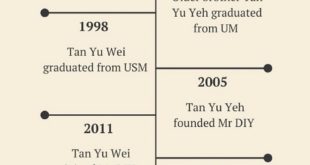Following the 2020 General Election results, Prime Minister Lee Hsien Loong conferred Workers’ Party (WP) Secretary-General, Pritam Singh, the title of the first official Leader of the Opposition.
With its win in Sengkang GRC, the Workers’ Party has further secured its position as the main opposition party in Singapore, increasing the number of its elected opposition MPs from six to 10.
The two NCMP seats are offered — when the number of elected opposition members fell short of 12 — to the Progress Singapore Party, which won the highest percentage of votes (48.31 per cent in West Coast GRC) among the opposition parties.
PM Lee had said that the election results reflect a clear desire for a diversity of voices in the Parliament.
He said he had congratulated Singh and the WP for their strong performance in the election, and Singh will be given the appropriate staff support and resources to carry out this role — without elaborating exactly what they are.
With that, we take a look at what the “official” Leader of the Opposition means and why former WP Sec-Gen Low Thia Khiang was never conferred the role.
What Exactly Is A “Leader of the Opposition”?
The Leader of the Opposition is a title held by the leader of the largest party not in government in a Westminster System of parliamentary government.

Singapore’s parliamentary system is modelled after the Westminster system in Britain. There, the Leader of the Opposition draws a salary on top of the MP allowance and picks a shadow Cabinet to follow the work of government departments.
In other countries, the Leader of the Opposition is supported with a secretariat and is additionally given office space in the Parliament buildings.
In addition, he will also be given access to Government data and information to be effective in scrutinising government policies.
Right now, the individual that leads the opposition party with the greatest number of elected opposition MPs is WP’s Secretary-General Pritam Singh, who was elected to the leadership of the WP on 8 April 2018.

With that, Singh is expected to continue sitting directly opposite PM Lee in Parliament, which has been the norm after he succeeded Low Thia Khiang.
What About A Shadow Cabinet?
A shadow Cabinet consists of a group of opposition spokespeople who, under the leadership of the Leader of the Opposition, form an alternative cabinet to that of the government.
Members will shadow or mirror the positions of each individual member of the Cabinet. In most countries, a member of the shadow cabinet is referred to as a shadow Minister.
For example, a shadow Minister for Education will be assigned to shadow the Minister for Education in the Cabinet.
It is the shadow Cabinet’s responsibility to scrutinise the policies and actions of the government, as well as to offer alternative policies.

“A shadow Cabinet allows for robust debate to take place, because it is very specific to each ministry,” said political analyst Dr Mustafa Izzuddin, who is also a senior international affairs analyst with political consultancy Solaris Strategies Singapore.
“They are waiting until the Cabinet itself is formed and once that is formed, the Opposition will be responding in return,” he added.
Currently, there is a total of 16 ministries in Singapore. With only 10 WP elected MPs, the possibility of a Shadow Cabinet may be formed only further in the future.
However, there is a likelihood that Singh could assign shadow Ministers to key ministries only. Alternatively, he could allocate one opposition MP to shadow more than one ministerial post.
“When they had six opposition MPs [before 2020 General Election], they were shadowing the Cabinet, but not in the official sense. They may have already divided [the responsibility] among themselves. For example, one opposition MP may have held two [or more] shadow ministerial posts,” said Dr Izzuddin.
Relatively, the shadow Budget is prepared by shadow cabinets as an alternative to the real Budget presented by the government.
The shadow Budget will typically form a key part of the party’s manifesto in an election, and will be largely, if not wholly implemented, when the opposition party subsequently forms a government, especially if it wins an outright majority.
Other Prominent Leaders of the Opposition
In the United Kingdom, the current Leader of the Opposition is Keir Starmer, the leader of the Labour Party and the main opposition party in the country. He also leads a shadow Cabinet.

The Conservative Party is led by Boris Johnson, who is also UK’s prime minister.
In the UK, the Leader of the Opposition doesn’t just have his MP allowance — he is also entitled to a salary. In 2013 to 2014, ex-Leader of the Opposition Ed Miliband was paid an extra £62,440 for his role.
Since 1937, the holder also receives a chauffeur-driven car for official business of equivalent cost and specification to the vehicles used by most cabinet ministers.
However, it is worthy to note that his shadow ministers are not paid a salary as that is only accorded to the Opposition Leader.
In Australia, the Leader of the Opposition is Anthony Albanese, who is the leader of the opposition Labour Party. He sits opposite Australia’s prime minister Scott Morrison, who is the leader of the governing Liberal Party, in the chambers.

As a senior Labour frontbencher, Albanese would have been earning about AU$ 259,000 a year. As Opposition Leader, he is expected to earn around AU$ 390,000 (S$ 380,210) since last year, including an extra AU$ 131,000.
The entitlements and privileges accorded to the Leaders of the Opposition in these countries differ, with some receiving high salaries almost amounting to the same level as a Cabinet minister, such as the Leader of the Opposition in the UK.
If Singh were to be entitled to draw a salary of a Cabinet Minister, his salary may amount to S$ 55,000 a month, or S$ 660,000 a year.
Previous Opposition Leaders Were Never Officially Bestowed The Title
With all of this, it makes one wonder why former WP secretary-general Low Thia Khiang was essentially doing the same job without the official, elevated status.
Going back to history, the first inaugural Leader of the Opposition in Singapore is Lee Kuan Yew in the Legislative Assembly in 1955, when Singapore was still a Crown Colony of the British Empire.
The term “unofficial leader of the opposition” was then coined in 1992 for Chiam See Tong, who was then with the Singapore Democratic Party (SDP).
At the time, three out of four opposition members in the House were from the SDP. Leader of the House Wong Kan Seng therefore used the title to give Chiam “due courtesy and precedence among opposition MPs”.

Chiam was seated directly opposite the Prime Minister — a seat that Low later occupied, followed by Singh when he succeeded Low as party chief in April 2018.
In 2011, Low rejected the “unofficial” leader position previously held by Chiam, saying: “Either you have a leader of the opposition, or you do not have it. There’s no need to have an unofficial leader of the opposition.”
Prior to GE 2020, the position was considered as an unofficial role, which was why the Leader of the Opposition then did not draw any additional allowance from holding the position.
Instead, they were entitled to the usual ordinary remuneration allowance granted to other regular MPs.
However, following the first formal appointment of the Leader of the Opposition, it is currently not yet known if any additional remuneration or even a salary, will be granted to the holder.
Why Is PM Lee Formalising The Role Now?
Adding to his response on conferring the role, PM Lee had said, “I told Mr Singh that with 10 MPs, I think it is right that he, the Workers’ Party leader, be formally designated as the Leader of the Opposition.”
To a large extent, the PM is responding to ground sentiments and public opinion during the Election and understanding the need for more robust debate in Parliament.
Monetary [matters] aside, the Leader of the Opposition will be elevated in status in Parliament, in terms of engagement in robust debate and also forming his own shadow Cabinet.
– Dr Mustafa Izzuddin
Not just a paper leader, the Leader of the Opposition is expected to do more beyond just opposing.
Instead, the public will be looking towards them to provide alternative policies and solutions to the ones PAP propose.
For example, if the government is proposing to raise the GST rate from seven to nine per cent as it projects to increase spending on healthcare, infrastructure and security, the opposition needs to counter-propose a system that can meet the increased spending while still maintaining the GST rate at seven per cent.
Featured Image Credit: Reuters / The Online Citizen Asia



